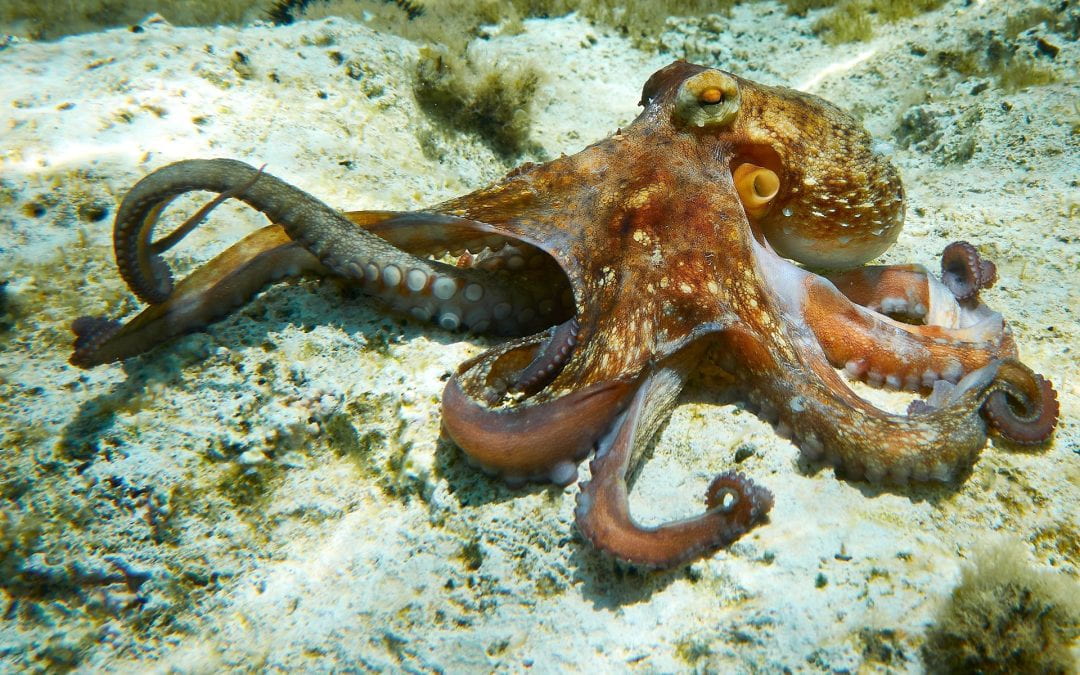Imagine having a wiring diagram of the brain — of its 100 billion neurons and their quadrillions of connections. What would that reveal to us about human cognition, disease, and even life itself?
That sort of huge undertaking is now conceivable, thanks to advances in electron microscopy, synchrotron-based X-ray imaging, and computing power. The field, called “connectomics,” is primed to transform neuroscience.
But first, researchers must be able to use machine learning techniques to automatically process petabyte-sized datasets of raw images. Scientists at the University of Chicago and Argonne National Laboratory are doing just that, with an animal that is about as distant of a relative from humans as you can get: octopuses.
That is not to say octopus brains are not complex. The cephalopods themselves are very intelligent and highly adaptive — they have been known to open jars and find clever ways to escape from their tanks. Their brain boasts 500 million neurons. But interestingly, these neurons aren’t just housed in a central nervous system. Instead, many neurons are spread out throughout their arms and body. In fact, scientists believe this allows their arms to move and process information independently.
Peter Littlewood, professor of physics, and his collaborators — including Asst. Prof. Narayanan Kasthuri, MD, who is also a neuroscience researcher at Argonne, and Nicola Ferrier, a senior computer scientist at Argonne — have been working to image the octopus’s neuronal architecture in an attempt to reverse-engineer its brain and understand how it functions.
To do so, they have taken thin slices of an octopus arm — thousands of times thinner than a sheet of paper — and imaged them using both electron microscopy and X-rays with Argonne’s Advanced Photon Source. This instrument is so powerful that it images close to synaptic resolution, just tens of nanometers in length.
Turning these stacks of neuron images into a full-blown wiring diagram takes supercomputing power combined with advanced machine learning algorithms. As a first step, the research team trained a segmentation algorithm — which partitions images into sets of pixels or regions — with the data, then scaled that algorithm onto massively parallel computers (Argonne’s Theta supercomputer) with the hope of scaling it up to the larger Aurora supercomputer.
This was no small task — it involved converting the image data into a manageable information flow and improving data hygiene (since images could occasionally be corrupted). The team published a paper describing the success in scaling the training.
“This is the largest scale of this kind of project that has been done so far,” Littlewood said. “It was really an achievement.”
The research was administered by the Data Science Institute and supported by the UChicago Joint Task Force Initiative, which helps Argonne and Fermilab achieve mission success by opening channels of frequent communication and collaboration across institutions.
During the midst of the project, Littlewood and a different team published a paper that has him considering new ways of thinking about this idea of a “connectome” of the brain. In general, the brain has quasi-synchronized activity that produces a pattern of action. Neural networks are considered nonreciprocal, because some neurons excite action, while others inhibit action. In their paper, Littlewood and his collaborators found a new principle within these dynamical systems — which got him thinking about how the patterns of synchronicity in the brain could be used to understand motion.
“This research has diverted us to thinking about the brain more abstractly,” Littlewood said.
The octopus team is applying for more funding to finish the wiring diagram project, with the hopes of eventually doing the same for a primate brain and then a human brain — a feat they say could be done within the next 10 years.
Ultimately, the team hopes to build a simulation of the human brain and see if it produces the same activity — connectivity patterns that produce stereotypical behaviors — that they would see on the wiring diagram.
“We’d like to create a major program that studies the ‘connectomics’ of the whole brain,” Littlewood said. “It has been very useful to have this grant to be able to do this seed project to show that we could in fact do this.”
– by Emily Ayshford

